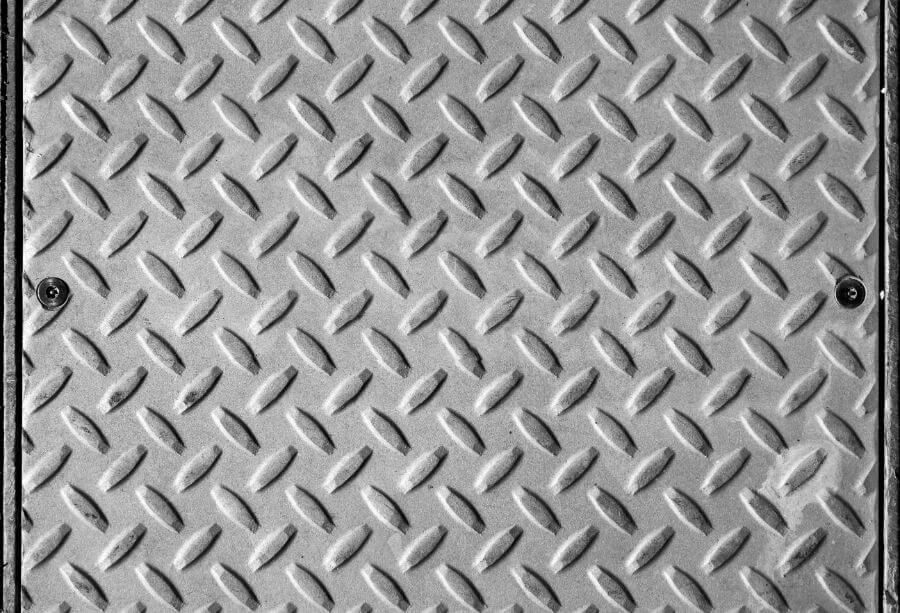Metal texture plates have emerged as a cornerstone in contemporary architecture, interior design, and industrial manufacturing. These plates, characterized by their embossed or engraved patterns, combine functionality with aesthetic appeal, offering versatility across industries. This article explores the latest advancements, production techniques, design trends, and applications of metal texture plates, shedding light on their growing prominence in 2025.
1. Understanding Metal Texture Plates
Metal texture plates are specialized sheets of metal—such as stainless steel, aluminum, or galvanized steel—that undergo surface treatments to create tactile or visual patterns. These textures range from subtle grain effects to bold geometric designs, mimicking materials like wood, stone, or fabric. The primary appeal lies in their ability to enhance durability while serving as decorative elements. For instance, stainless steel with water ripple patterns (a popular choice in luxury interiors) combines corrosion resistance with dynamic light-reflective properties.
2. Manufacturing Processes
The production of metal texture plates involves advanced techniques to ensure precision and consistency:
A. Embossing and Stamping
Embossing: Hydraulic or roller presses imprint patterns onto metal sheets. For example, water ripple effects are achieved using custom-designed dies that apply controlled pressure to create multi-layered textures.
Laser Cutting: High-precision lasers carve intricate designs, enabling patterns like floral motifs or hexagonal grids. This method is favored for custom architectural panels.
Rolling and Coating: Cold-rolled steel sheets are textured during the rolling phase, followed by coatings (e.g., PVC or PET films) to enhance durability and color retention.
B. Advanced Technologies
3D Modeling Integration: Tools like Substance 3D Designer allow digital artists to simulate metal textures, optimizing designs for real-world production.
Eco-Friendly Practices: Manufacturers now prioritize low-VOC coatings and recyclable materials, aligning with global sustainability standards.
3. Surface Finishing and Customization
Modern metal texture plates offer extensive customization through innovative finishing techniques:
A. Color and Coating
Electrolytic Coloring: Produces hues like black, gold, or rose gold by altering surface oxidation layers.
Vacuum Plating: Titanium or copper coatings add metallic luster while improving scratch resistance. For example, PVD (Physical Vapor Deposition) coatings are widely used in high-end architectural projects.
B. Texture Variations
Industrial Chic: Brushed or perforated textures are popular in urban loft designs, providing a rugged yet refined aesthetic.
Nature-Inspired Patterns: Woodgrain and stone textures bridge indoor and outdoor spaces, offering a cost-effective alternative to natural materials.

4. Applications Across Industries
A. Architecture and Interior Design
Facades and Cladding: Textured stainless steel panels are used in iconic buildings like the Seoul HOBAN Gallery, where embossed patterns create visual depth.
Ceilings and Partitions: Water ripple stainless steel ceilings in hotels (e.g., Shanghai’s J Hotel) reflect light dynamically, enhancing spatial ambiance.
B. Automotive and Furniture
Car Interiors: Aluminum texture plates with anti-fingerprint coatings are integrated into dashboards and door panels for a premium feel.
Custom Furniture: Laser-cut metal textures add artistry to tables, cabinets, and lighting fixtures.
C. Industrial and Functional Uses
Anti-Slip Flooring: Diamond-plate steel sheets are essential in factories and shipyards for their grip and durability.
HVAC Systems: Perforated metal plates with airflow-optimized textures improve ventilation efficiency.
5. Emerging Trends in 2025
A. Smart Textures
Light-Responsive Surfaces: Photochromic coatings enable patterns that shift under varying light conditions, ideal for interactive art installations.
Thermal Adaptivity: Textured plates with embedded phase-change materials regulate building temperatures passively.
B. Hybrid Materials
Combining metal with composites (e.g., carbon fiber-textured steel) enhances strength-to-weight ratios, revolutionizing aerospace and automotive sectors.
C. Digital Fabrication
AI-driven texture generation tools allow designers to prototype patterns in minutes, reducing lead times for custom orders.
6. Challenges and Future Outlook
While metal texture plates thrive, challenges persist:
Cost Constraints: High-end finishes like vacuum plating remain expensive, limiting accessibility.
International Competition: Brands like 3M and DuPont dominate the premium market, pressuring local manufacturers to innovate.
Looking ahead, advancements in nanotechnology and circular manufacturing (e.g., closed-loop recycling) promise to make textured metal plates more sustainable and affordable.
Metal texture plates exemplify the fusion of art and engineering, transforming mundane surfaces into dynamic design elements. From embossed stainless steel in skyscrapers to eco-friendly coated panels in smart homes, their applications are boundless. As technology evolves, these plates will continue to redefine aesthetics and functionality across industries, cementing their role as a 21st-century material staple.



View More(Total0)Comment Lists